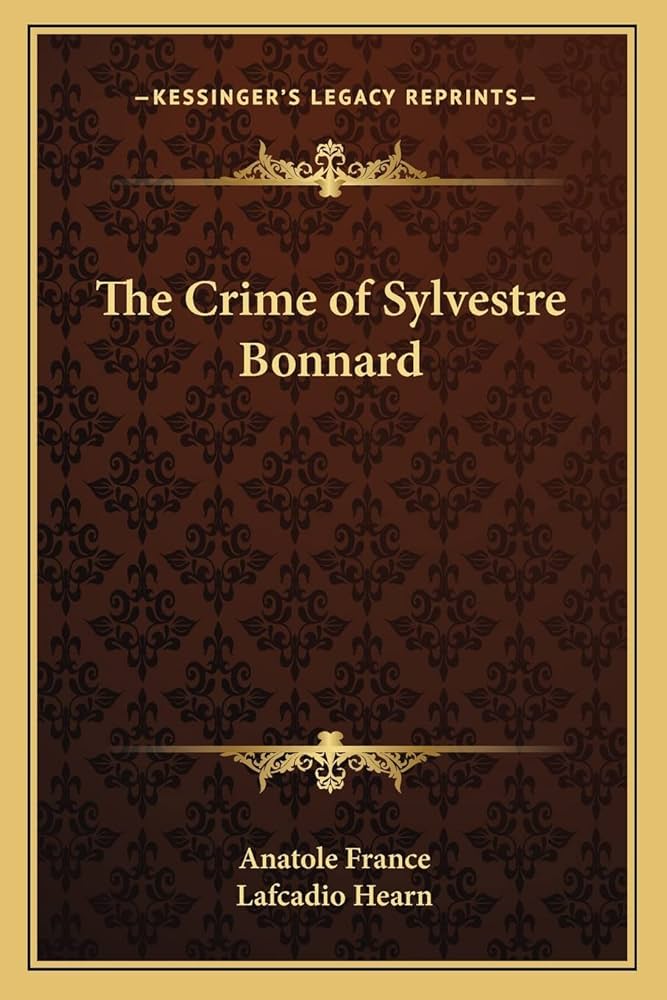Chapter III — The Crime of Sylvestre Bonnard
byChapter III begins with a curious tone, as the surreal remnants of a dream linger in the mind of a man who otherwise lives in the realm of logic and literature. What appears to be a whimsical figment—a fairy tale carried into wakefulness—becomes the opening thread of something unexpectedly meaningful. Sylvestre Bonnard, though a man of letters and rational thought, finds joy in recounting this strange dream to Madame de Gabry. Her lighthearted response doesn’t dismiss it, but embraces the idea that creativity can often bloom where control loosens its grip. Their exchange carries a deeper sentiment—an unspoken appreciation for imagination that transcends age. Madame de Gabry’s encouragement, subtly woven with warmth and understanding, brings a flicker of youthful wonder into Bonnard’s otherwise orderly existence. Through this interaction, we glimpse not just the charm of friendship but the awakening of something beyond scholarship—perhaps the stirrings of unexpected purpose.
The days that follow move with quiet diligence. Bonnard devotes himself to examining the manuscripts of the Lusance library, treating each page with the reverence of a historian who sees time not in dates, but in ink and texture. Yet, reality presses gently against his quiet task. He becomes aware of the financial strain burdening the Gabry household, particularly Monsieur Honore’s estate. In an attempt to assist, Bonnard seeks advice on arranging a sale for the library’s contents, exposing his inexperience in the economic realm. Though learned in texts, he is disarmed by commerce, reminding us that intellect doesn’t always translate to practical skill. Amid this, Bonnard’s wanderings—through old churches and under the open skies—offer him solace, a momentary escape from the pressure of stewardship. These simple pleasures reconnect him with the rhythm of daily life beyond books, where meaning is found not only in preservation but in participation.
The true surprise of the chapter arrives upon his return, when he encounters something entirely unexpected: a small statue resting on a pier-table. At first, confusion sets in. The statuette appears to have leapt straight from his dream—every detail remembered, now shaped in wax. The mystery unravels as he learns that Jeanne, a quiet orphan with an eye for detail, crafted the figure. This revelation is more than a coincidence—it feels fated. Jeanne had listened closely to his story, absorbing not just the plot but its emotional undertone, then expressed it through her art. The moment marks a shift in Bonnard. The dream becomes more than a nighttime curiosity—it becomes a bridge between imagination and real connection.
Jeanne’s artistic gift opens a new conversation—one that revolves around the possibility of survival through creativity. Madame de Gabry poses a sincere question: could this talent be cultivated to offer Jeanne a future? Bonnard doesn’t answer immediately, but the idea lingers in his thoughts. The recognition of Jeanne’s skill, paired with her quiet dignity, resonates with him deeply. Her presence adds a new dimension to his structured world. Where once manuscripts and marginalia filled his focus, now a child’s expression of wonder asks him to consider the living stories behind each life. The statue isn’t merely an object—it is a testament to the power of being heard and valued.
As this chapter unfolds, the narrative subtly reshapes itself. What began with a scholarly task now carries the weight of guardianship, inspiration, and awakening. Bonnard, in his soft-spoken way, begins to shift. The pursuit of knowledge gives way to the care of someone who might one day craft knowledge of her own. The question is no longer just how to preserve ancient texts, but how to nurture the voices of the future. Jeanne’s introduction isn’t just a plot development—it is a meaningful intersection of age and youth, of memory and potential. Through her, Bonnard is pulled gently into the present moment, asked not to only remember history, but to become part of a new one being made.
He does not immediately abandon his role as a man of study. Yet now, his attention is divided in the most human way. Between the inked wisdom of centuries and the fresh spark of a young creator’s mind, he must learn how to walk in both worlds. The library remains his sanctuary, but now it echoes with softer footsteps and the hum of promise. In Jeanne’s modest yet imaginative gesture, Bonnard finds himself not only honored but challenged. Her statue becomes a symbol—one that suggests new stories can be written even within old walls. And perhaps, for the first time in many years, Bonnard doesn’t just curate history. He helps shape it, one small act of care at a time.


